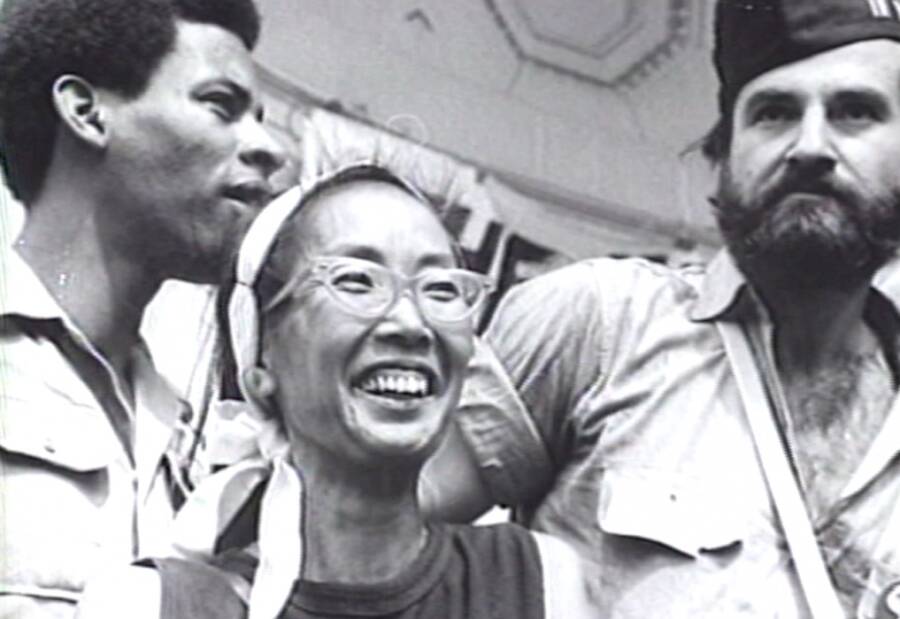

Pac often talked about how Movement radicalism left women like his own mother raising families on their own while the men in the family were incarcerated, assassinated or absent. Whitehorn’s brief story here also illustrated how these are struggles political and personal. Pac’s stepfather Mutulu Shakur is literally singing there with them on that record, and they are collectively singing the ethos of Malcolm’s call for the self-determination of all oppressed people. Whitehorn’s snapshot of Yuri and Pac was like listening to “Free the Land” by Chris Iijima, Nobuko Miyamoto, and Charlie Chin on the A Grain of Sand album. Trace the lineages, and one can see how the legacies of both families and their communities catalyzed movements that transformed the nation and world twice over. Yuri and Pac’s families were profound friends, comrades in intense post-Malcolm struggles for Black and Third World Liberation. Because if a Japanese American woman such as Yuri and Malcolm X were a hard pairing for people to imagine, then undoubtedly in public imagination Yuri and THUG LIFE are too and what people don’t understand about Yuri reveals exactly how much we don’t understand about social movements. It also embodied the interconnectedness of our struggles. It spoke of the insurmountable courage of Pac’s childhood, and it spoke of the prodigious compassion of Yuri and the Kochiyamas to continually share their space.
#YURI KOCHIYAMA FREE#
That image of Pac as a child speaking about the struggle to free his politically imprisoned family members at Yuri’s house was something very moving to me. This 9-year-old Tupac was, of course, not just talking about abstract historical figures, but members of his own family - his stepfather Mutulu Shakur, his godfather Geronimo Pratt, Sundiata Acoli, Sekou Odinga, and others. Whitehorn recalled a then 9-year-old Tupac Shakur speaking eloquently and passionately about the need to free political prisoners at a meeting in Yuri’s house.

Dubbed “Grand Central Station” or the “Revolutionary Salon,” this Harlem apartment and Kochiyama family residence was a hub for activists, artists, students and other community members for much of the last four decades of the 20th century. In an event curated by the late Fred Ho in celebration of Diane Fujino’s 2005 book release of the biography Heartbeat of Struggle: The Revolutionary Life of Yuri Kochiyama, Laura Whitehorn spoke of the activist harbor that was the Kochiyama house. One of my favorite stories about Yuri is also about Tupac. Originally posted at Hyphen Yuri Kochiyama painting by Sahra Vang Nguyen. Her accomplishments and continuing involvement offer a unique view of past struggles in human rights and an inspiring glimpse at possibilities for the future. Through interviews, writings, music and archival footage, this film captures the extraordinary vitality and compassion of Yuri Kochiyama as a Harlem-based activist, wife, mother of six children, educator and humanitarian.


 0 kommentar(er)
0 kommentar(er)
